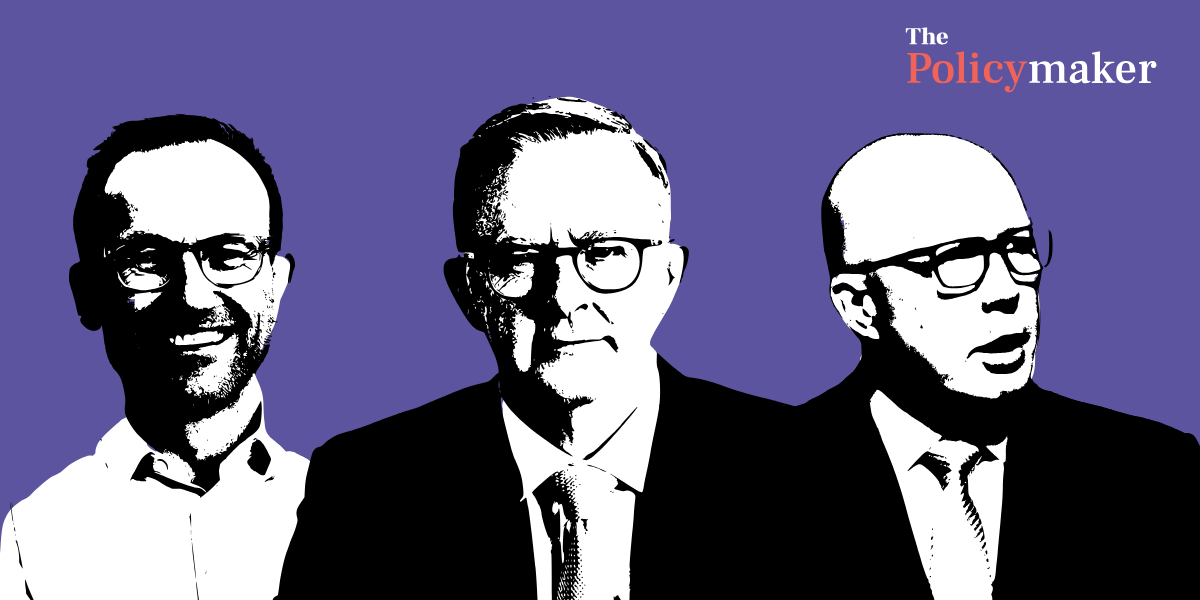What is required to translate recent policy progress into practice when it comes to engaging men and boys to prevent violence in our society? Changing the way men relate to themselves, to people in their lives and to deeply embedded norms that put pressure on men to be a certain way are key parts of the solution.
Content warning: This article contains references to violence and mental illness.
Tomorrow marks the end of the annual 16 days of Activism against Gender-Based Violence. Since 1991, this campaign has called for the elimination of violence against women. The associated events, marches and advocacy have been and continue to be crucial work.
But what would change if these past 16 days focused on activism against men’s violence? The reality is that 95 per cent of people who experience violence report a male perpetrator. Victims of violence include people of all genders.
To end violence, we have to change the behaviour of men. This article shares lessons from our violence prevention work engaging men and boys at The Men’s Project—an initiative of Jesuit Social Services.
First, our context
Established in December 2017, The Men’s Project builds on Jesuit Social Services’ 45-year history working with men and boys, many facing crises: experience of violence themselves, time in child protection and out of home care, time in prison, expulsions, suicidality and addiction to substances. Our focus is on prevention and early intervention before these crises occur. We seek to address the root causes of harmful behaviours, including the impact of outdated attitudes about masculinity.
There has been welcome recent policy progress. The statement from victim-survivors in the National Plan to End Violence against Women and Children 2022–2032 puts it plainly: “Abuse and violence is a problem for victims, but it is not the victims’ problem.” The National Plan is part of a suite of recent policies that highlight the importance of engaging men and boys including the Respect@Work report, recent changes to parental leave, Respectful Relationships curricula, and the Victorian Government’s efforts through the Second Free From Violence Action Plan and the Building Equality Policy.
These policies build on hard won change. Women and feminist organisations have brought issues of family violence, sexual harassment and assault into mainstream discourse, calling out the reality that too often women have been disbelieved and had their voices silenced.
Yet, there’s still much to do. We live in a society that continues to value the masculine over the feminine whether it relates to the ongoing prevalence of violence, the burden of unpaid household labour, undervaluing caring professions or the underrepresentation of women in leadership roles. Patriarchy is ever-present, and bestows unfair benefits on men while subjugating women. In some spheres, male dominance is the norm—consider any recent analysis of pornography, or the seemingly never-ending stories of off-field misbehaviour by our male sporting “heroes”. This patriarchal reality, and challenging it, must sit at the core of violence prevention efforts.
Patriarchy also has negative impacts on men. In 2004, bell hooks wrote: “The first act of violence that patriarchy demands of males is not violence toward women. Instead patriarchy demands… all males… kill off the emotional parts of themselves.” Indeed, emotions outside a small range—anger, happiness, pride—are too often relegated to being seen as feminine so must be denied to prove one’s manhood. This can result in an inability to process complex feelings and tragically underpins the use of violence against women as well as some men’s desire for dominance over other men.
We face a conundrum
Men receive unfair privileges from patriarchy. Men also perpetrate and passively condone violence. And yet, engagement with men and boys needs to be mindful of their subjective realities and intersectional disadvantage. As writer Jess Hill highlights, while “men are powerful as a group (and are often told they are entitled to power), they do not necessarily feel powerful as individuals.”
A central question in violence prevention work is why some men don’t feel empowered and secure? Why is their sense of self so tied to dominance over others, especially women? What impact do patriarchy and masculine norms have on their sense of identity?
One of our first and foundational pieces of work was our “Man Box” research. The Man Box is a set of norms that place pressure on men to be a certain way—to be tough, not to show emotion, to be the breadwinner, be in control, and use violence to get respect; and to have many sexual partners. These social constructions of stereotypical masculinities vary across cultures and over time. What’s consistent is the value placed on stereotypically male characteristics over stereotypically feminine characteristics.
In partnership with Equimundo, based in Washington DC, we brought the Man Box idea to Australia. We surveyed 1,000 randomly selected 18 to 30-year-old Australian men finding that the majority of men surveyed felt social pressure to live up to stereotypical ideals of what it means to be a man. We also found that fewer men—still too many—personally endorsed these Man Box norms. For instance, 43 per cent of respondents agreed that society told them “a man should always have the final say about decisions in his relationship or marriage”. This dropped to 27 per cent when respondents were asked if “in their opinion” this should be so.
We found strong associations between Man Box attitudes and a range of harmful behaviours. Compared to men who subscribed least to Man Box norms, those who subscribed most were 20 times more likely to self-report sexually harassing a woman, 14 times more likely to report using physical violence and over twice as likely to have experienced suicidal thoughts. While the reasons for these harmful life outcomes are multi-faceted, the impact of the Man Box dwarfed demographic factors which we controlled for such as where men live, their cultural background, religion and levels of education.
Men’s conformity to the Man Box is reinforced through perceived benefits personified by online personalities such as Andrew Tate. The prize is a spot in the alpha male “in-group” in return for endorsing a mix of misogyny, homophobia and classist bile. In some contexts, stepping outside the Man Box can result in immediate sanction—“don’t be a girl”; “what are you, a pussy?”. At their core, although often destructive, these dynamics centre around a search for identity, connection and belonging.
When Man Box norms are threatened, research finds the response can be dire. Consider one part of the Man Box—that “men should be the breadwinner”. A recent ANU study found when this norm is violated—i.e., women earn more than their male partner—the likelihood of men’s violence and emotional abuse against their partner increases. Importantly, there is also other evidence which suggests that greater economic equality can lead to more gender equal relationships. However, in the face of threats to the male breadwinner norm, rather than work through why this feels personally challenging, some men will choose to denigrate and degrade their female partner to assert superiority.
This does not seek to excuse violence or justify maintaining a gendered pay gap. Rather, by better understanding contributing factors to violence, we have a greater chance of addressing it.
Some emerging lessons—four practice directions
Here are four (non-exhaustive) practice directions which form part of The Men’s Project’s approach to violence prevention.
These directions cannot be achieved through one-off workshops. They require a holistic approach involving ongoing engagement with people who can positively influence men and boys —parents, family, early childcare workers, teachers, social workers, coaches, and other community leaders—and attention on structural inequities often reflected in policies or processes. Influencers—ideally working in mixed-gendered groups—need space for self-reflection including on their own power and privilege. They need to be equipped to respond to inevitable backlash. In doing this work, we partner with organisations—including women’s health organisations—who prevent and respond to violence. While valuable guides and tools exist, there’s still much to learn. Those doing this work, including ourselves, should be explicit regarding their approach and engage independent evaluators supported by funders who are also adopting a learning mindset.
First, through group discussion, we must increase understanding of and facilitate reflection on the harms associated with stereotypically masculine norms. This work is deeply personal. Men—including this author—will have fallen short in the past, failing to challenge or perhaps actively supporting Man Box ideas. Group discussion should traverse reflection on research such as the Man Box and stating plainly the horrific facts about family violence, while also elevating the lived experience of those who have been victims of violence—including men who have experienced violence due to the behaviour of other men. Through our work, we aim to change the way men and boys relate to people in their lives as well as to cultural norms such as the Man Box that we know they’re perceiving.
Second, there’s work required to help men and boys better perceive the gap between what they think society believes and what their peers in fact believe. The Man Box findings add to research that suggests men overestimate other men’s sexist and violence-supportive attitudes while also understating men’s willingness to intervene to prevent sexual assault. Unsurprisingly, men who subscribe to Man Box attitudes are less likely to call out a sexist comment due to fears related to belonging. We’ve got to teach skills and create cultures that equip men and boys to intervene. While not all men are violent, all men have a role in preventing violence.
Third, demonstrating positive alternatives is crucial. Professor Michael Flood from the Queensland University of Technology offers some helpful principles: healthier masculinities are gender equitable, diverse, not unique to men and boys, and healthy for men and boys themselves.
There is not one set of behaviours appropriate for all situations. We must not create another Man Box. Research suggests that to decrease the use of violence we need to build greater consciousness of “rote-learned” thoughts or scripts. For instance, an effective violence reduction program delivered in Chicago, Becoming a Man, found that young people’s use of violence was often due to reflexive and over-generalised responses to provocation. In short, they were confusing when (unfortunately) a more confrontational response may be required for their own self-protection as against situations where they were safe.
We are all at risk of this; self-reflection and slowing down takes effort. An awareness of context matters. Dominance and competitiveness against opponents on the sports field can be appropriate, but have devastating consequences in a discussion with an intimate partner. And while we want men to be aspirational and seek out what they want in life, this is problematic if carried over to a sense of entitlement in the context of rape and sexual assault.
When positive alternatives are explored, we can also aspire to detach from socially-constructed masculinities. As Professor Bob Pease has pointed out, if part of the problem relates to masculinity being valued over femininity, any effort that continues to foreground masculinities is likely to be inherently limiting. In some contexts, our facilitators at The Men’s Project are using healthier identities as an alternative to healthier masculinities.
Fourth, men and boys need skills that enable a deeper connection with themselves, others and our planet. Understanding the impact of the stories we tell ourselves can loosen the grip of negative conceptions tightly linked to Man Box ideas. Trauma can compound these dynamics, including, and especially, boys and young men’s experience of male violence in the family.
Each of us need to learn critical self-reflection skills including what has shaped the way we relate. These need to be taught. It is not enough to point out that rigid attachment to Man Box norms may be at the root of problems or that violence is not acceptable. We have to support people to embrace the dignity of each human being—including themselves—as inherently and equally deserving of love, connection and belonging. To do this, boys and men have to be allowed and encouraged to feel and express the full range of human emotion without fear of being ostracised. It’s not surprising that research suggests describing emotions—a skill—is a protective factor that mitigates against aggression when young men are distressed.
So, what will come from 16 days of activism against men’s violence? My hope is that there will be nuanced discussions regarding the merits of different approaches to violence prevention work with men and boys. My hope is that the calls of advocates are acted upon and we place the perpetrator at the forefront of efforts to address violence, filling the blanks on statistics like 1 in ? men has perpetrated physical violence, 1 in ? men has perpetuated sexual violence. My hope is that men and boys—standing in solidarity with people of all genders—make a meaningful contribution to ending violence.
Matt Tyler is the Executive Director of The Men’s Project at Jesuit Social Services working with a team committed to providing leadership on the reduction of violence and other harmful behaviours prevalent among men and boys. Prior to joining Jesuit Social Services, he worked as a Fellow for Harvard’s Government Performance Lab focused on child protection and he has also previously worked on reforms to family violence services and child protection in Australia. He is trained as an economist with a particular focus on statistics, holding a Master of Public Policy from Harvard’s Kennedy School and Honours in Economics from Monash University.
The ideas presented in this article have been shaped by engagement with countless collaborators and have also been informed by The Men’s Project’s experiences delivering our Modelling Respect and Equality and Unpacking the Man Box programs in partnership with schools, workplaces and other community organisations.
Image credit: Ibrahem Bana / Getty Images












